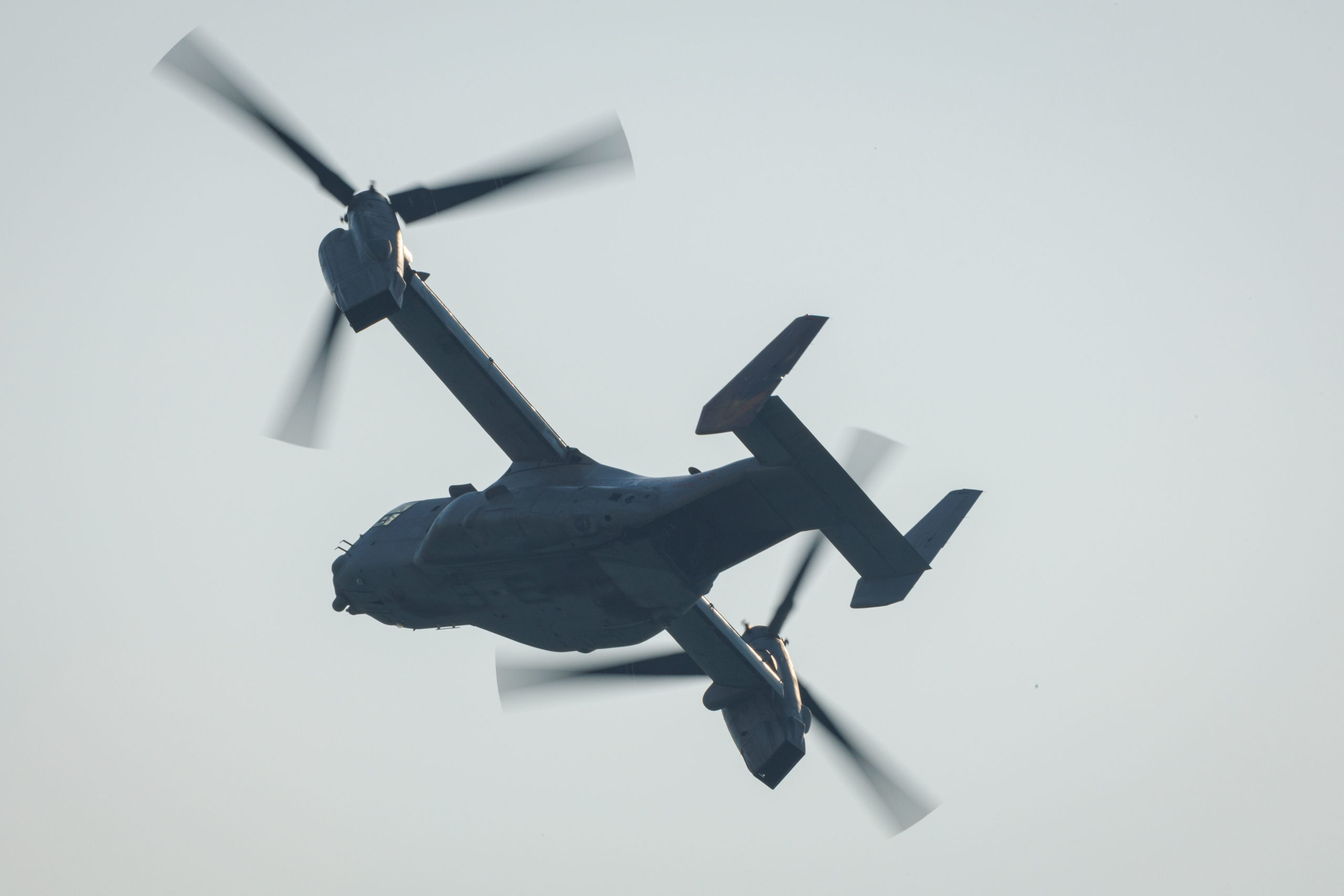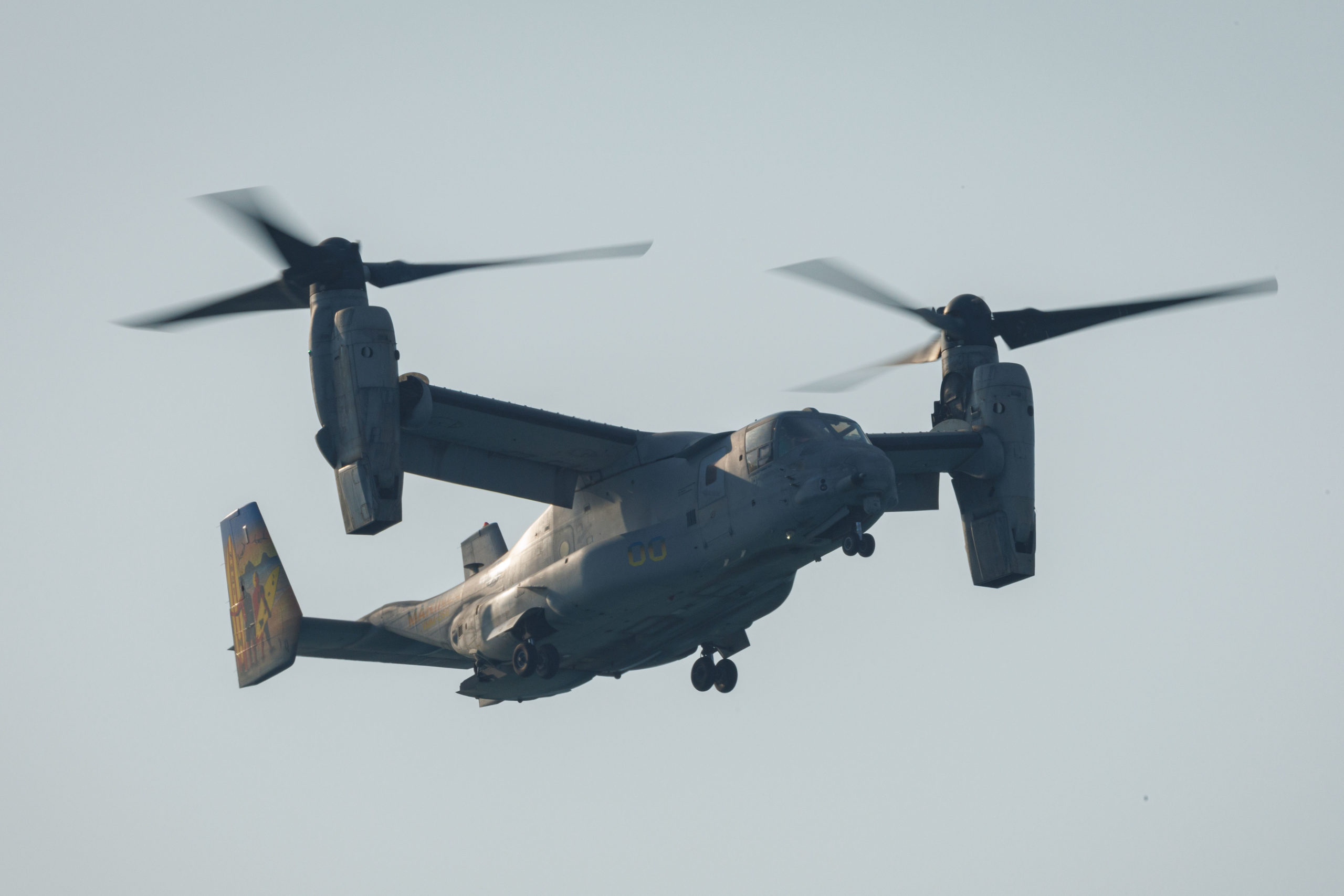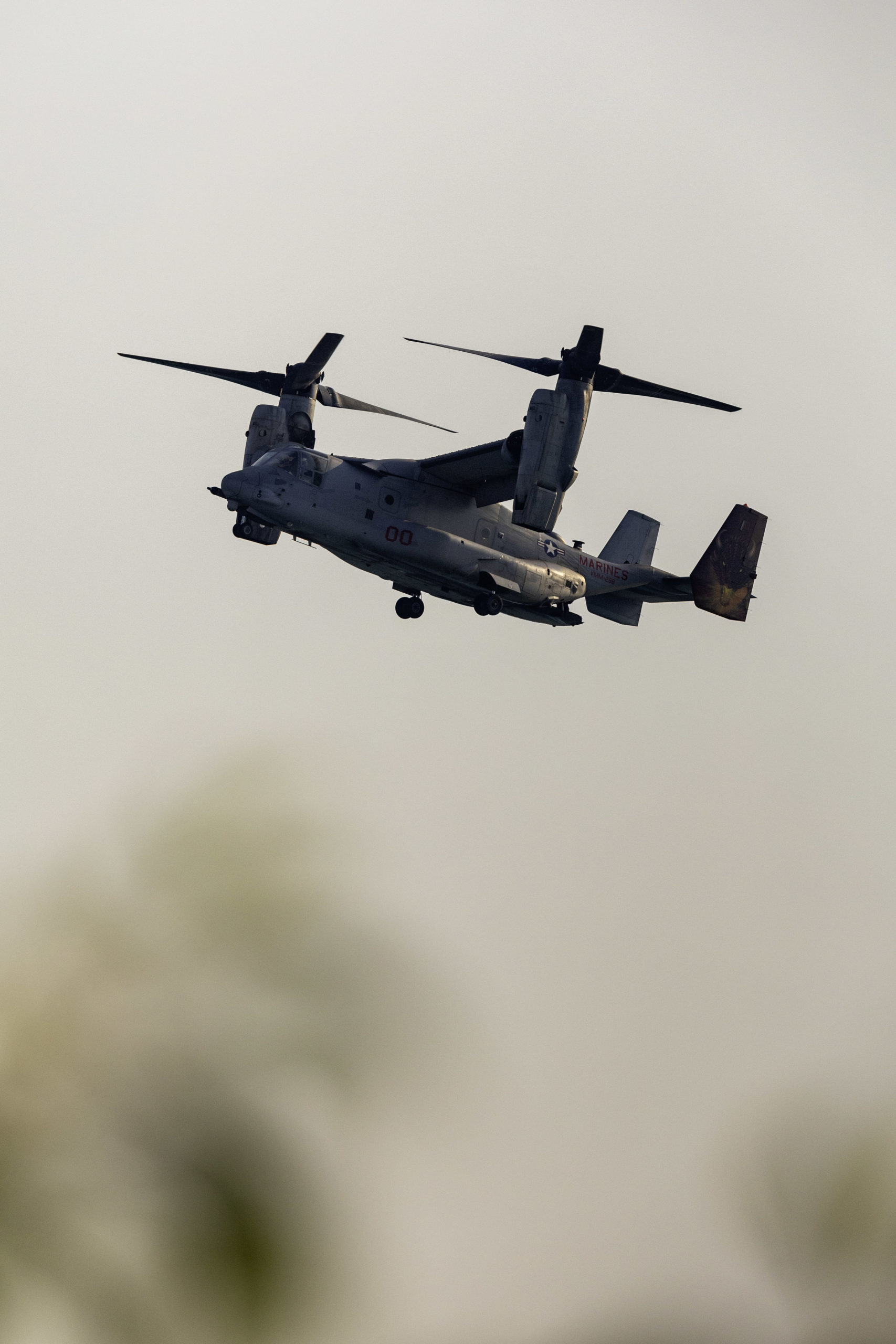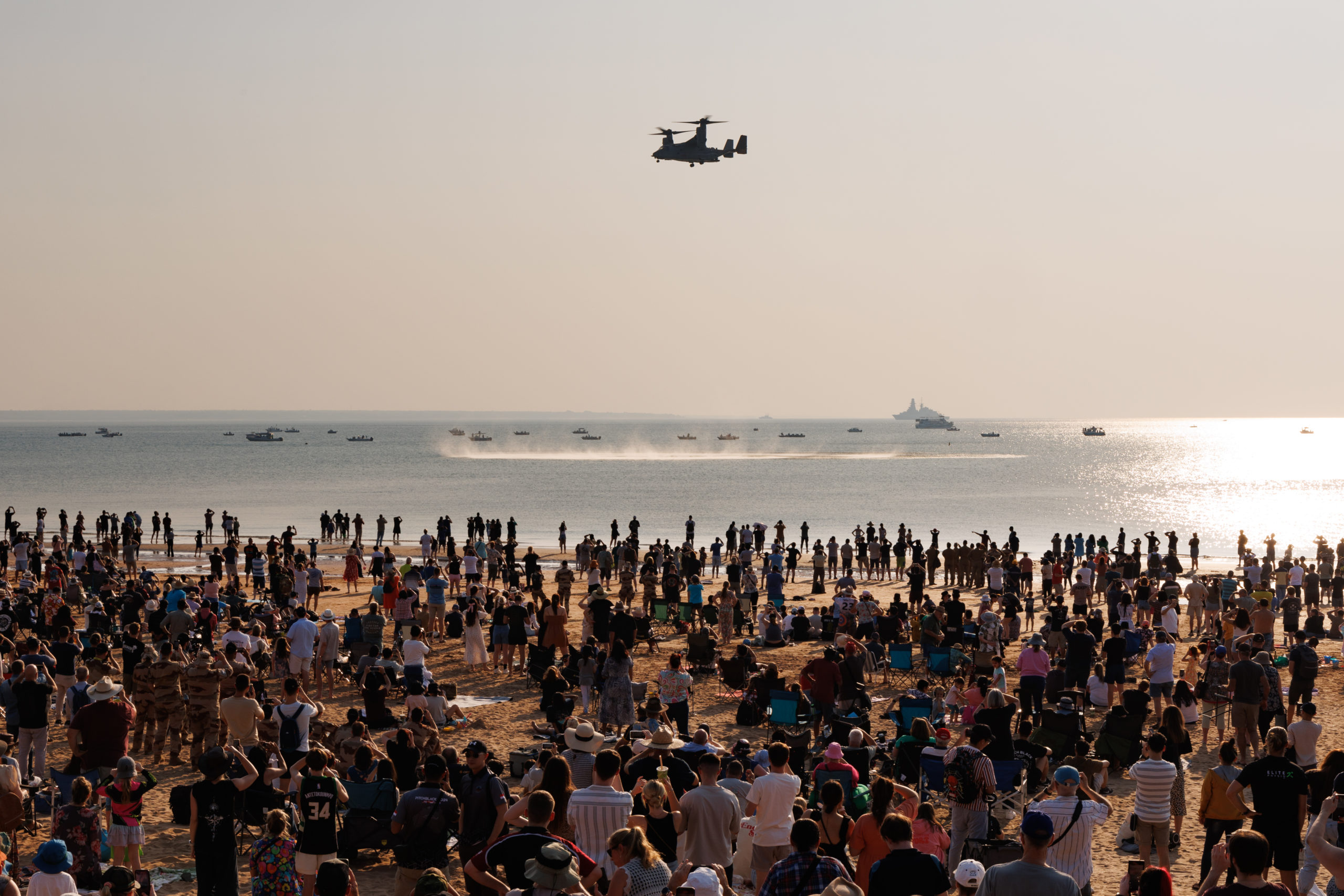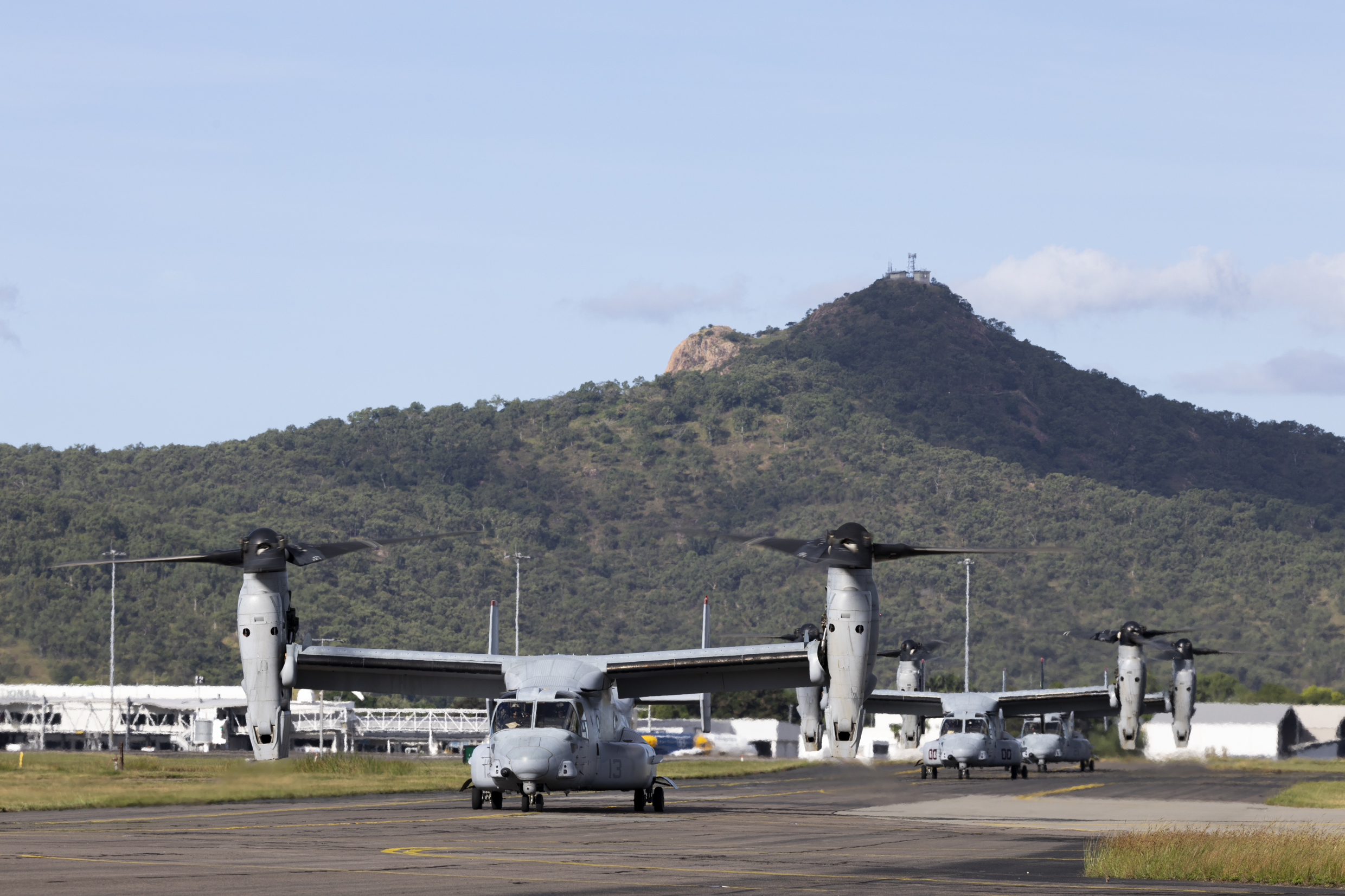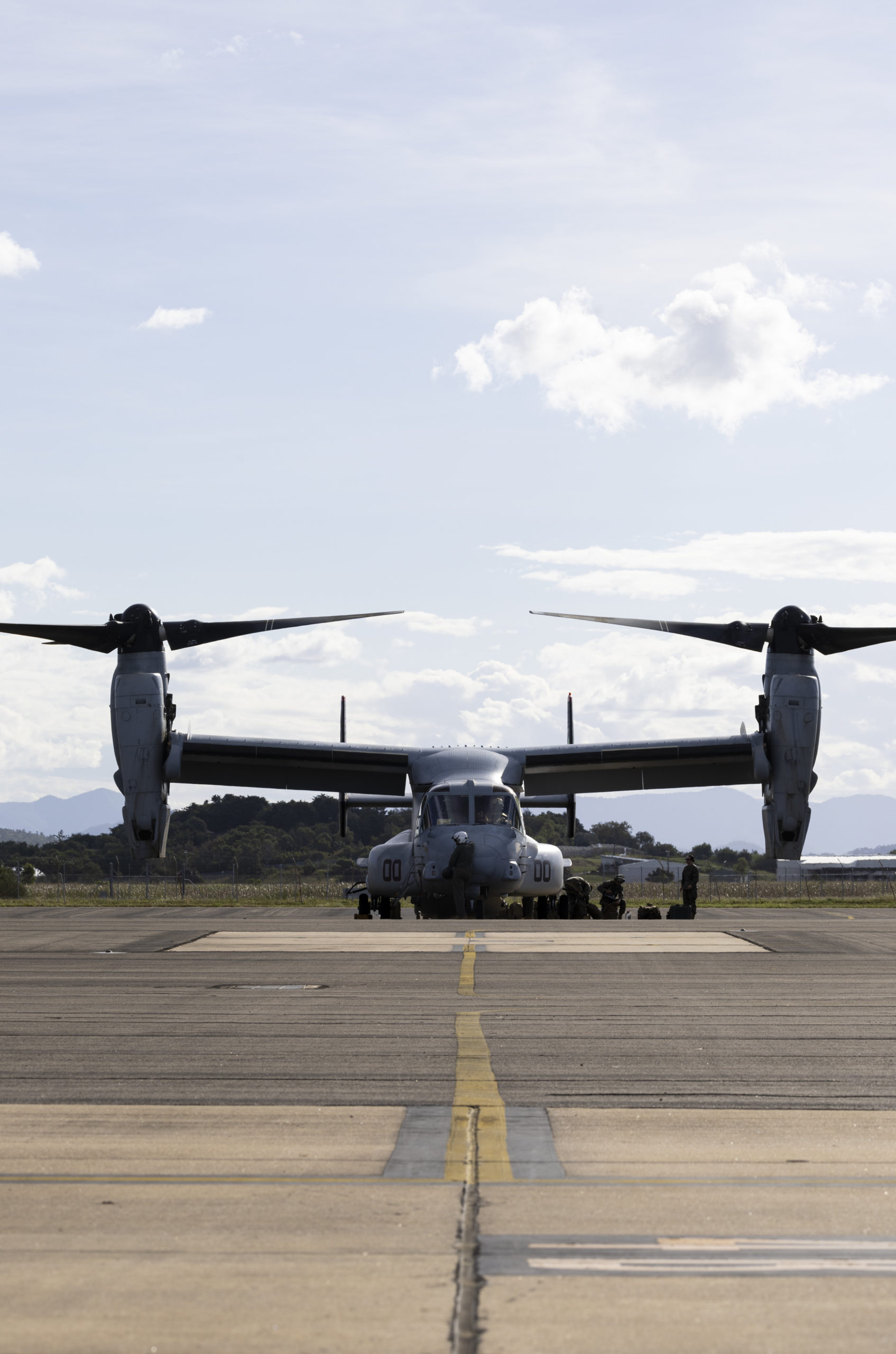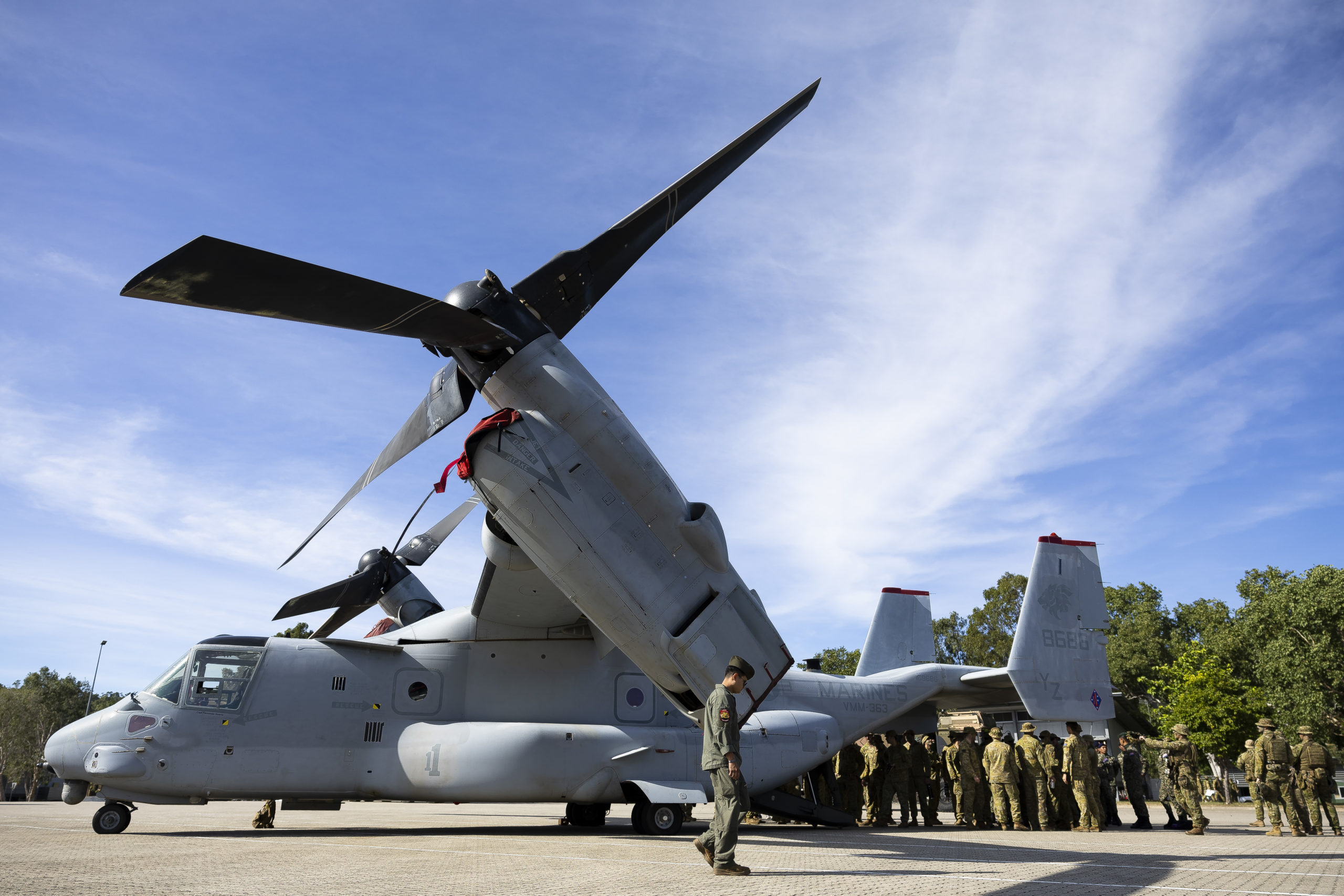By Robbin Laird
In this article, we are highlighting photos of the MV-22 recently operating in Australia in the Northern Territory. The aircraft comes along wtih the Marines in their regular rotation to work with the ADF each year.
The first photos show the Osprey participating in Pitch Black 24.
Exercise Pitch Black 24 is the Royal Australian Air Force’s biennial capstone international engagement exercise, with forces drawn from a wide range of regional, coalition, and allied nations. Held from 12 July to 2 August 2024, the exercise concentrated on military airspace in the Northern Territory, with participants flying from RAAF Bases Darwin, Tindal, Amberley, Curtin, and regional airfields in the Kimberley region.
Exercise Pitch Black 24 is the largest iteration of the exercise since first held in 1981, with 20 participating nations and over 140 aircraft involved, and approximately 4400 personnel from Australia and overseas participating. Activities such as Exercise Pitch Black help Australia to advance a free and open Indo-Pacific region, build connections around the globe, bolster regional security, and build regional resilience to transnational threats.
The second group of photos highlight the United States Marine Corps V-22 Osprey arriving at RAAF Base Townsville, in preparation for Exercise Southern Jackaroo 2025. Exercise Southern Jackaroo is held within Exercise North Queensland Warfighter and includes Australian Army personnel from 3rd Brigade, the Japanese Ground Self Defence Force and the United States Marine Corps to strengthen interoperability.
The Osprey is part of what I have called the Tiltrotor enterprise as it is evolving with the new addition of the U.S. Army variant of the aircraft underway.
And perhaps, the Australian Army will be operating the new variant itself one day in performing its littoral operations.
This is how the Australian journalist, Gregor Ferguson, described the possibility in a March 25, 2025 article:
While it may not be available to export customers for five or 10 years, says Greg Elliott, Bell Textron Australia’s Canberra-based manager for military sales and strategy, it’s not too early to talk about the things that set the FLRAA apart from traditional troop-lift helicopters such as the Black Hawk.
“It’ll go twice the distance at nearly twice the speed carrying the same payload,” he says. The FLRAA’s combat range is up to 800 nautical miles, and it cruises at 280 knots compared with the Black Hawk’s 320nm and 150kts.
Its ferry range of more than 2100nm is sufficient to cross Australia in a single flight or it could self-deploy to most destinations in our region from somewhere like Darwin or Townsville. Being able to conduct casualty evacuations or raids on enemy forces faster and much further away than an ordinary helicopter can do is potentially game-changing, says Elliott.
The new, 14-passenger aircraft – which doesn’t even have an official Pentagon name yet – will enter Low-Rate Initial Production (LRIP) in 2028 and is due to enter service in about 2030, says Elliott.
“We’re expecting (US Foreign Military Sales) pathways for international partners by the early 2030s,” he adds.
US Army leaders have been providing their views on the right mix of Black Hawks and FLRAAs and the benefits the latter might provide. Major General Brett Sylvia, commander of the iconic 101st Airborne Division (Air Assault), was interviewed last year by online publication The Aviationist and commented: “We can’t perform large-scale, long-range air assaults at the speed and distance modern missions demand.”
In an exercise last year, he said, the division moved about 3000 combat troops nearly 1000km from Kentucky to Louisiana using conventional helicopters. The exercise took three nights, two mission support bases, no less than six forward refuelling points and 1000 logisticians and security personnel. General Sylvia said that using the FLRAA you could move those troops in a single night with just half the support infrastructure.
The Marines’ Hub-Spoke Strategy: The Importance of U.S.-Australian Military Cooperation
And this year, I am publishing a two volume study of the tiltrotor enterprise based on many interviews and experiences with the aircraft since 2007.
As seen on Amazon Australia:


